LISA Conference 2013
LISA2013
On November 1, 2013, 40 of the world’s top experts in digital and interactive art installation, data visualization, software art, interactive advertising, 3D printing, electronic sculpture, LED design, projection mapping, mobile art, tech wearables, app development, open source art, augmented reality, hacker art, new media curating, and digital art collecting will gather on stage at the Tishman Auditorium at The New School.
We will be livestreaming the conference! http://new.livestream.com/TheNewSchool/lisa2013
See videos from last year on our YouTube channel. I tweet at @softwareandart.
Keynote Address: Zoë Keating, cellist and technologist
Panels
From Virtual to Real – Successfully Translating Digital Work to a Collection Context. Moderated by Christiane Paul, Associate Professor, School of Media Studies, The New School, Adjunct Curator of New Media Arts, Whitney Museum. Confirmed panelists: John F. Simon Jr., Lynn Hershman-Leeson, Lev Manovich and Magda Sawon.
Open Source Art. What is open source art and why is it important? How do the economics and participation of open source art work and why does it matter? Who is doing interesting work in open source today, and what are they making? In this conversation, our panelists are creators of open source movements and users of open source software. They discuss different types of open source art, from programming languages and electronics platforms to software art whose code itself is open sourced, and follow the impact of several different systems since their inception. Confirmed panelists: Scott Draves, Stefanie Wuschitz, Evelyn Eastmond and Lauren McCarthy, Anton Marini.
DIY and the stART-up economy. Do-It-Yourself culture meets the new economy in DIY art, design and technology startups. What forces are driving the success of these companies? How does DIY and Maker culture fit in to the digital economy? How did they get started? What struggles do they face? Who are their clients, and their clients’ customers? Moderator: Sunny Bates. Confirmed panelists: Hilary Mason, Bre Pettis, Gabriella Levine and Kegan Schouwenburg.
Creative Coding, Art and Advertising. What are the values of advertising? Is there a conflict between art and advertising? What is different when you are doing advertising vs. doing your own work? What is some of the best commercial software art and creative coding being done today? Moderator: Chick Foxgrover. Confirmed panelists: Jamie Zigelbaum, Vivian Rosenthal, Margaret Brett-Kearns and Barry Threw.
Friday night Dance Party, Stunning Visuals, Drink Specials
Workshop (Saturday, $25 additional fee): Rendering Interactive 3D Environments with Jitter and Blender (in partnership with Harvestworks)
Keynote

Zoë Keating is a one-woman orchestra. She uses a cello and a foot-controlled laptop to record layer upon layer of cello, creating intricate, haunting and compelling music. Zoë is known for both her use of technology – which she uses to sample her cello onstage – and for her DIY ethic which has resulted in the sale of over 60,000 copies of her self-released albums and 1.2 million followers on Twitter.
Speakers
Anton Marini, Software engineer, live visualist, graphics programmer.
Alessandro Ludovico, Editor-in-chief of the magazine of critical digital culture and media arts, Neural.it.
Barry Threw, Immersive and interactive media artist, co-founder of ArtUp, director of Software at Obscura Digital.
Blake Carrington, Visual, sound and performing artist.
Bre Pettis, CEO, Makerbot; founder, NYCResistor; videoblogger.
Christiane Paul, Associate Professor, School of Media Studies, The New School; Adjunct Curator of New Media Arts, Whitney Museum.
Claire Bardainne, Artistic co-director for AM-CB, a creative research and design studio that merges digital arts with the performing arts to create spectacles and installations.
Clement Valla, Digital media artist.
Elisa Giardina Papa, an artist whose work concerns the role of collective image production and dissemination in contemporary society.
Evelyn Eastmond, Software engineer and artist, developer for processing-js, open web engineer at Bocoup and adjunct faculty at RISD
Gabriella Levine, Creative technologist, interactive artist and open-source hardware designer; fellow, Unreasonable At Sea; COO Protei Inc. drone sailboats.
Hilary Mason, Data scientist and hacker; co-founder, hackNY; member,NYCResistor; scientist emeritus, bitly; data scientist in residence, Accel Partners
Jake Lee-High, installation artist, experiential designer, creative coder, and explorer.
Jamie Zigelbaum, Interactive artist and sculptor; founder, MidnightCommercial, a studio for art, design and technology; founder & curator, Industry Lab.
John F. Simon Jr., software artist.
Joshua Davis, Artist, designer, technologist, and creative director at Code and Theory, a creative digital agency that designs products, content and campaigns across platforms.
Kaiser Fung, Statistician; blogger, Junkcharts; Author of Numbersense: How to use big data to your advantage and Numbers Rule Your World: the hidden influence of probability and statistics in everything you do; Vice president, business and analytics, Vimeo.
Kegan Schouwenburg, 3D print designer, entrepreneur, Maker.
Lauren McCarthy, Artist and computer programmer, adjunct faculty at RISD and NYU-ITP, developer for processing-js.
Lev Manovich, Artist, new media theorist, professor of computer science at CUNY, Author, The Language of New Media and Software Takes Command
R. Luke Dubois, Software artist, assistant professor of digital media at New York University.
Lynn Hershman Leeson, New media artist, filmmaker.
Magdalena Sawon, Digital art dealer; co-founder and co-director, Postmasters Gallery.
Margaret Brett-Kearns, Executive Interactive Producer at Goodby, Silverstein & Partners, art buyer.
Miral Kotb, Software engineer, entrepreneur, founder, iLuminate.
Scott Draves, Algorithmic artist and open source software artist, inventor of the Fractal Flame algorithm and founder of the Electric Sheep.
Shane Hope, Software artist and 3D-print sculptor of artilectual femtofactured mind-splaces, fluidentities, thunkuppetrees, post-conscious subthreaded sales-swarms, and prescient peek-a-boo plunderware portraiture on percept pus.
Sophia Brueckner, Software artist, designer and engineer; research assistant, MIT MediaLab.
Stefanie Wuschitz, Media artist and researcher; Founder of Miss Baltazar’s Laboratory, lecturer on digital art.
Steve diPaola, computer-based cognitive scientist, artist and researcher.
Toni Dove, Electronic media and virtual reality performance artist, hybrid film and installation artist and experimental theater producer.
Vivian Rosenthal, Founder and CEO at Snaps!, augmented reality photos; artist; advertising creative and executive.
Yucef Merhi, Software artist, hacker, computer programmer, web and graphic designer.
Zoe photo by Chase Jarvis. Other photos by JeffBeckerPhotography.com. Schedule and speakers subject to change.
Schedule
We’ve planned the following schedule (subject to change):
Thursday, Oct. 31 – Attendees will receive the studio visit schedule
Friday, Nov. 1 – Tishman Auditorium at The New School, 66 W. 12th Street, NYC
8:00-8:30 Registration, Coffee, Pastries.
8:30-8:45 Please be seated
8:45- 9:00 Opening Remarks
9:00-10:00 First Panel – From Virtual to Real – Successfully Translating Digital Work to a Collection Context.
10:00-10:20 Break, Coffee
10:20-10:50 Keynote
10:50-11:50 Lightning Artist Talks (10 artists)
11:50-1:30 Lunch nearby for LISA conference guests (Not associated with New School)
1:45-2:00 Additional Remarks
2:00-3:00 Second Panel – Open Source Art
3:00-3:30 Break, cookies
3:30-4:20 Lightning Artist Talks (9 artists)
4:20-5:20 Third Panel – DIY stART-ups: 3D printing and Hardware Hacking
5:20-6:20 Fourth Panel – Creative Coding, Art and Advertising
6:20-6:30 Wrap
6:30-8:30 Break for Dinner
8:30-12:00 Dance Party, Drink Specials – Conference Ticket Required for Entry – The Afterparty will have free beer+wine and our signature LISA cocktail until the tab runs out; it should last at least a couple hours. It starts at 8:00 pm Friday and is at the Wooly, a hidden private speakeasy located at 11 Barclay Street (bet. Broadway and Church inside the Woolworth Building) in Tribeca, Manhattan. Subway is 2/3 (Park Place), A/C (Chambers), E (World Trade Center) or R (City Hall). The party will end at midnight.
Saturday, Nov. 2 11am – 7pm
Blender Max and Jitter workshop: Rendering Interactive 3D Environments at Harvestworks
Image: Far Edge Soylent Green Tea Party. 3D-printed PLA molecular models on acrylic substrate
Shane Hope, 2013 24″x24″
Location & Lodging
The LISA conference will be held in the gorgeous 500-seat Tishman Auditorium at The New School with assistance from the School of Media Studies. The address is 66 W. 12th Street between Fifth Avenue and 6th Ave. on the south side of the street. Convenient subway stops are the 1,2,3 train to 14th St. and 7th Ave.; F,M train at 14th St. and 6th Ave.; and the L,N,Q,R,4,5,6 train at 14th St. and Broadway.
The party will be held at a The Wooly, 11 Barclay St. bet Broadway and Church inside the Woolworth Building from 8pm – midnight on Friday. Tickets are required for entry and will be distributed at the conference earlier in the day. Subway is 2/3 (Park Place), A/C (Chambers), E (World Trade Center) or R (City Hall).
There are hotels near the conference venue; there are hotels near the party venue; but more importantly, it’s pretty easy to get from anywhere in Manhattan to anywhere else in Manhattan in fairly short order. You don’t want a car in the city this weekend, so if you drive here, we recommend parking at a commuter rail station and taking the train the rest of the way in. Your lodging can be anywhere on a good subway line. If you need help planning your trip, please contact me at isabel at draves dot org.
Halloween
This is a terrific weekend to visit New York City. The Halloween Parade (celebrating its 40th Anniversary) starts near the conference venue at 7pm on Thursday 10/31 and continues throughout the evening. Bars will be crowded and streets and subways will be packed with ghoulish and racy characters. Bring a costume to join in, and don’t plan to travel anywhere quickly. Enjoy the special atmosphere! The parade was cancelled last year due to Hurricane Sandy, which had a big impact on New York City, and the heroes and firefighters of Sandy will be flamboyantly celebrated.
NYC Marathon
The New York City Marathon was also cancelled last year due to Hurricane Sandy, disappointing thousands of people who traveled worldwide to compete and cheer. This year it is to be run on Sunday, Nov. 3rd. If you’ve never watched the world’s largest marathon before, it’s a surprisingly thrilling and emotional rush to cheer people on. Crowds of people will run by you, each trying their hardest to run the 26.2 miles at their personal best. Many have funny costumes, run in a costumed group, or wear t-shirts saying “go Anne go” so you can cheer people on by name and see them beaming with joy. We recommend doing some search engine sleuthing to see where the best places to watch the marathon are.
If you’re leaving Sunday morning, expect delays and be sure to leave enough time to get to the airport. Travel underground if possible as some streets will be closed off due to the marathon.
We recommend you come with a friend on Wednesday night, October 30th. Spend Thursday at our open studios learning about our artists, or make meetings in the city. Spend Friday with us at the conference; on Satruday, take our workshop on 3D interactive design and learn Blender, Max and Jitter. Or check out “Soundings: A Contemporary Score” at MoMA featuringTristan Perich, a LISA2012 speaker. You can catch “TJ Wilcox: In the Air” at the Whitney, “Participatory City: 100 Urban Trends from the BMW Guggenheim Lab Exhibit” at the Guggenheim, “Chris Burden: Extreme Measures” at the New Museum, or “Balthus: Cats and Girls—Paintings and Provocations” at the Met. You could head to the museum of the moving image or the Brooklyn Museum. On Sunday morning, watch the marathon. Meet some new friends for a late lunch and then head to the airport or train station. Or, Sunday 11/3 at 3pm, feel free to meet Isabel informally at the Cloisters to experience Janet Cardiff’s 40 part motet all the way up at the northern tip of Manhattan (A train to 190th, then one stop on M4 bus).
We can’t wait to see you!
Panels
Open-Source Art
What is open source art and why is it important? How do the economics of open source art work? Who is doing interesting work in open source today, and what are they making? In this conversation, our panelists are creators of open source movements and users of open source software. They discuss different types of open source art, from programming languages and electronics platforms to software art whose code itself is open sourced, and follow the impact of several different systems since their inception.
With moderator Zach Lieberman and panelists Scott Draves, Stefanie Wuschitz, Anton Marini, Lauren McCarthy and Evelyn Eastmond, we’ll discuss how open source is impacting the art space.
Moderator Zach Lieberman has been developing open source art and code for his entire career. Zach is an artist, researcher, and hacker dedicated to exploring new modes of expression and play. He loves to make things and recently opened a new school, the School for Poetic Computation. He develops and is one of the co-founders of openframeworks, a c++ library for creative coding and works on the eyewriter project, a lowcost / opensource hardware and software toolkit that helps people draw with their eyes.
The EyeWriter project won the Design of the Year (interactive) from London Design Museum, FutureEverything prize from the future everything festival and the Golden Nica in Interactive Art at Ars electronica. The eyewriter was also listed by Time magazine as one the 50 best inventions in 2010. Also, the IQ Font project won the Cannes Design Lion. Zach is one of the recipients of the AOL 25 for 25 grant, and was listed in Fast Company Magazine’s 100 Creative people in business.
He cofounded the company yesyesno, and worked with Mago Julian making opensourcery, a performance that mixed software and close magic.
Zach has helped with the IQ font, a project where a stunt driver drives a typeface; rhonda, a 3d drawing tool that helps people sketch ideas simply in 3d; sonic wire sculptor, its musical cousin, and jigazo, a reconfigurable jigsaw puzzle.
Panelist Stefanie Wuschitz is a lecturer, researcher and media artist from Vienna. She graduated with honors from the University of Applied Arts, Vienna, and completed her Masters at NYU’s Interactive Telecommunications Program. During a Digital Art Fellowship in Sweden she coordinated the Eclectic Tech Carnival 2009 and founded Miss Baltazar’s Laboratory. At the moment she is a doctorate candidate at the University of Technology, Vienna, researching on women and trans artists in Syria, working with interactive technology and teaching part time at the University of Applied Arts Vienna at the department of DIGITAL ART.
Her art work has been presented among others at the following venues: the Austrian Cultural Forum (NYC), Galeria Hippolyte (Helsinki), Okno (Bruessels), Videonale (Bonn), Goethe Institut (Damascus), Arthall (Budapest), Worm (Rotterdam), Murberget (Härnösand), the Ars Electronica Festival (Linz), Transmediale (Berlin), ViennaFair (Vienna), DogPigArt (Taiwan).
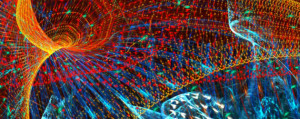
Scott Draves is a pioneering software artist best known for creating the Electric Sheep, a collective intelligence consisting of 450,000 computers and people that uses mathematics and genetic algorithms to create an infinite abstract animation.
His work has been shown at LACMA, MoMA.org, Prix Ars Electronica, ZKM, Art Futura, Emoção Art.ficial Bienial and is in collections world-wide including Carnegie Mellon School of Computer Science, the 21c Museum Hotel, MQS Capital, Google, the Simons Center for Geometry and Physics, and MEIAC. His clients range from Skrillex to the Adler Planetarium. Electric Sheep apps are available for iPad and Android.
In 1990 he received a BS in Mathematics from Brown University and in 1997 a PhD from the School of Computer Science at Carnegie Mellon University for a thesis on metaprogramming for media processing.
Watch hisautobiographical documentary video.
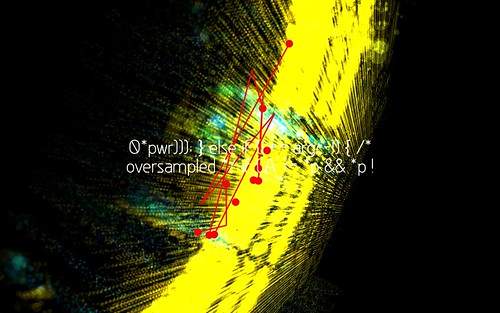
Anton Marini designs and performs with his own realtime video software. His work focuses on improvisation, realtime manipulation of video and moving images, of synchronization of synesthetic devices. He plays, bends, rips, tears, shreds, morphs, molds, blends and synthesizes pixels to form new visual experiences. His work is an ongoing effort to find a means of dynamic expression through moving image. He keeps a journal of his progress and distractions here: abstrakt.vade.info. Feel free to follow along.
Evelyn Eastmond and Lauren McCarthy are working on a version of Processing for the web.
From Virtual to Real
The first panel of the day at the LISA2013 conference is solidified! It’s moderated by Christiane Paul, Adjunct Curator of New Media Arts at the Whitney Museum and Associate Professor, School of Media Studies at The New School. Christiane is one of the premier curators in this field.
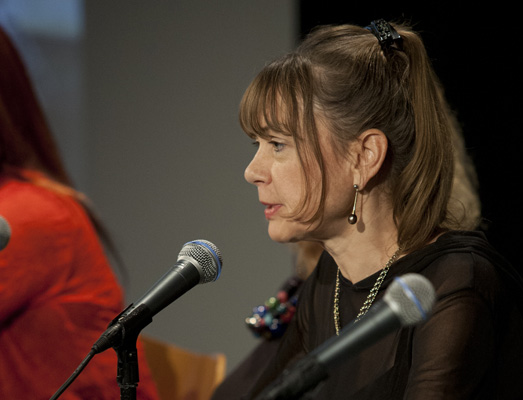
Confirmed for the panel, which will explore the inclusion of digital and new media works in museum and gallery settings and what makes digital works suitable for collection, is artist and filmmaker Lynn Hershman Leeson. Over the last three decades, Lynn has been internationally acclaimed for her pioneering use of new technologies and her investigations of issues that are now recognized as key to the working of our society: identity in a time of consumerism, privacy in a era of surveillance, interfacing of humans and machines, and the relationship between real and virtual worlds. In 2004, she was named “the most influential woman working in New Media”.
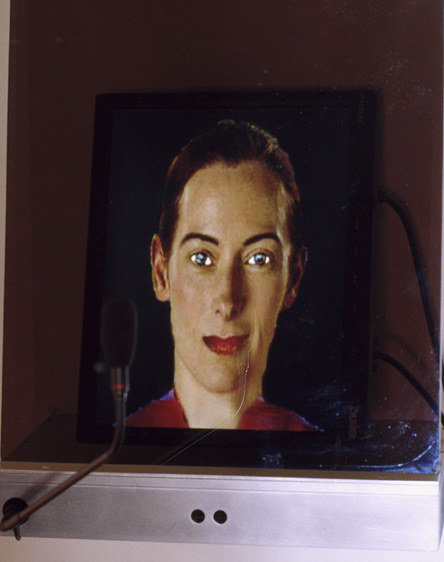
Lynn released the ground-breaking documentary !Women Art Revolution in 2011. It has been screened at major museums internationally and named by the Museum of Modern Art as one of the three best documentaries of the year. She wrote, directed, produced and edited the feature films Strange Culture, Conceiving Ada, and Teknolust. All featured Tilda Swinton and were showcased at the Sundance Film Festival, Toronto International Film Festival and Berlin International Film Festival.
Lynn has been honored with grants from Creative Capital, The National Endowment for the Arts, Nathan Cummings Foundation, Siemens International Media Arts Award, Lifetime Achievement from Siggraph, Prix Ars Electronica, and Alfred P. Sloan Foundation Prize for Writing and Directing. The Digital Art Museum in Berlin recognized her work with the d.velop digital art award (d.daa), for Lifetime Achievement in the field of New Media. Lynn Hershman Leeson received a John Simon Guggenheim Memorial Foundation Fellowship. Her working archive was acquired by Stanford University Special Collections Libraries.
Her work is featured in the public collections of the Museum of Modern Art, William Lehmbruck Museum, The Los Angeles County Museum of Art, The National Gallery of Canada, Walker Art Center, The Whitworth Art Gallery, Manchester and the University Art Museum, Berkeley, in addition to celebrated private collections and in shows and retrospectives at Kunsthalle Bremen, the Tate Modern, and Zentrum fur Kunst Und Medientechnologie.
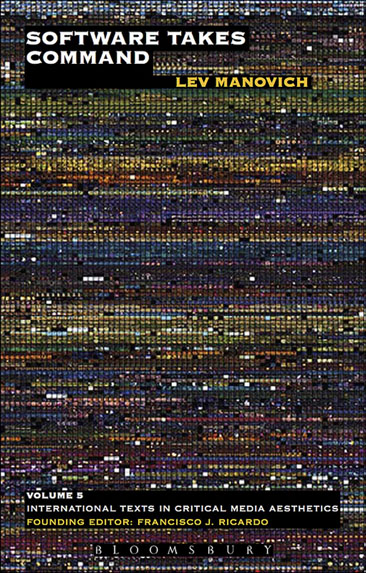
Lev Manovich, who literally wrote the book on New Media Art theory, will also be participating on the panel. Lev’s recent book in critical aesthetics, Software Takes Command, examines interfaces and tools. Manovich has been working with computer media as an artist, computer animator, designer, and programmer since since 1984. His art projects have been presented by, among others, ZKM, The Walker Art Center, KIASMA, Centre Pompidou, and the ICA (London). Manovich is a Professor in Visual Arts Department, UCSD, a Director of the Software Studies Initiative at California Institute for Telecommunications and Information Technology, and a Visiting Research Professor at Godsmith College (University of London), De Montfort University (UK) and College of Fine Arts, University of New South Wales (Sydney).
Lev’s awards include National Endowment for the Arts Humanities High-Performance Computing, Guggenheim Fellowship, Digital Cultures Fellowship from UC Santa Barbara, Fellowship from The Zentrum für Literaturforschung, and Mellon Fellowship from Cal Arts. Manovich also been a visiting professor all over the world. He has an M.A. in Experimental Psychology (NYU, 1988) and a Ph.D. in Visual and Cultural Studies from University of Rochester [1993]. Lev’s Ph.D. dissertation “The Engineering of Vision from Constructivism to Computers” traces the origins of computer media, relating it to the avant-garde art of the 1920s.
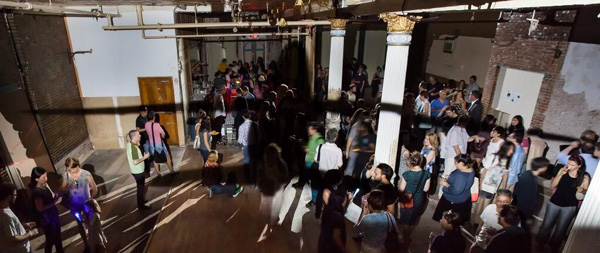
Magda Sawon is the co-founder and co-director of Postmasters Gallery in New York City, which opened in 1984 in the Village and since has found homes in Soho, Chelsea and Tribeca. Postmasters actively seeks new forms of creative expression and shows them in a context of painting, sculpture and photography, video and new media. The artworks are generally content oriented, conceptually based, and reflective of our time. She will be joining the panelists in the discussion, along with John F. Simon.
John has been producing art professionally for 20 years beginning with hand and pen plotter drawings and progressing through Internet Art to finally arrive at his own practice of ‘coding as creative writing’. The main way that he shows his Software Art is through sculptural wall hangings with LCD screens that he calls ‘art appliances’ and has made and sold since 1999.
Color Panel v1.0, John’s first ‘art appliance’, was published as an edition of 12 and shown at the Sandra Gering Gallery in New York in 1999. It was acquired at that time by the Whitney Museum of American Art, the Solomon R. Guggenheim Museum, and the San Francisco Museum of Modern Art. Shortly after, his premier piece of Internet based Software Art, called ‘Every Icon’, was included in the 2000 Biennial Exhibition at the Whitney Museum of American Art. His work was shown again at the Whitney Museum in 2001 in their survey of computer-based work ‘BitStreams’.
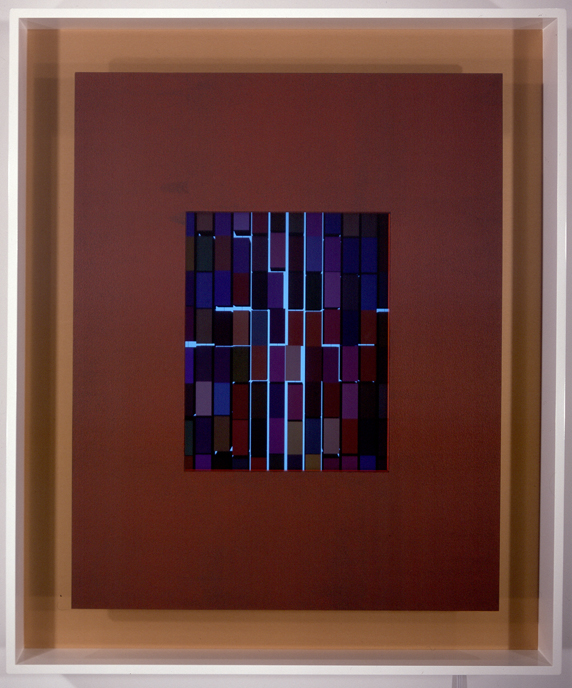
John has shown new work with the Sandra Gering Gallery regularly for 14 years. His work has international exposure including large surveys like Media City Seoul 2002 (Seoul, Korea) and Flower Power at the Musee des Beaus-Arts in Lille, France, and a retrospective at Collezione Maramotti, 2009, (Bologna, Italy).
John’s work has been commissioned by the Guggenheim Museum and is in the print collection at MoMA. He’s received the Trustees Award for an Emerging Artist from The Aldrich Museum for Contemporary Art and a Creative Capital New Media Grant. Additional Software Art Appliances can be found in the collections of the Museum of Modern Art, The Los Angeles County Museum of Art, Brooklyn Museum of Art, Ulrich Museum of Art, The Tweed Museum of Art, and the Albright-Knox Art Gallery among many others.
We are really looking forward to our first panel at the LISA conference on November 1! Please join us!
Top Image: Lynn Hershman Leeson’s 1999-2002 web project Agent Ruby exhibited at SFMOMA in Spring of 2013.
Creative Code, Art, and Advertising
The last panel of the day at LISA will be moderated by Chick Foxgrover, Chief Digital Office at American Association of Advertising Agencies. Titled Creative Code, Art and Advertising, this panel is designed to show off some of the best creative software work being done in advertising today, and to explore questions like “What are the alignments and conflicts between software art and advertising?”, “What is different between when artists are doing commercial work vs. ‘their own’ work?”, “What is the true marketplace for the work creative coders do?” and “How can the tech artist community and the interactive agency community be more aligned?”.
We hope you will come join us and hear our panelists with backgrounds in art, art buying, advertising, augmented reality, interactive installations, virtual museums and projection mapping discuss their work and bring important issues to the foreground. Chick will converse with Jamie Zigelbaum, Vivian Rosenthal, Barry Threw and Margaret Brett-Kearns.
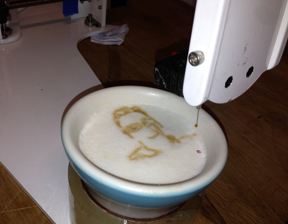
Barista Bot for GE was a collaboration between Jamie Zigelbaum, Kyle McDonald, Rock Paper Robot and Hypersonic.
Jamie Zigelbaum makes interactive sculpture—conceptual, physical, computational objects and environments that metabolize and express our emerging contemporary experience. His work can be found in private collections, including the Frankel Foundation for Art and the Rothschild Collection. He has exhibited internationally, in venues such as Ars Electronica, Design Miami/ Basel, The Corcoran Gallery, Saint-Etienne International Design Biennial, The Creators Project, The Tech Museum, Riflemaker Gallery, and Johnson Trading Gallery. His awards include Designer of the Future from Design Miami/ Basel, Best Music Video and Video of the Year from the British Video Music Awards, Honorable Mention from I.D. Magazine Annual Design Review, and Honorary Mention from Prix Ars Electronica. Jamie co-founded the Industry Lab co-working space in Cambridge, MA, Zigelbaum+Coelho, and is founder at the new studio Midnight Commercial.
Jamie has a BS in Human-Computer Interaction from Tufts University and a Masters from the Tangible Media Group at the MIT Media Lab where he spent his time inventing and researching next-generation user interfaces.
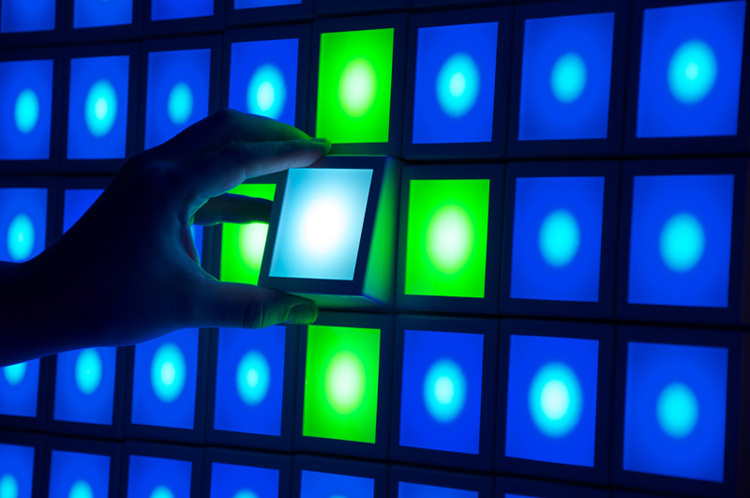
Six-Forty by Four-Eighty was created by Zigelbaum + Coelho for the Design Miami/ Basel 2010 W Hotels Designer of the Future Award.
Vivian Rosenthal is the founder and CEO of Snaps! (formally known as GoldRun), a mobile engagement platform. Snaps! connects brands and consumers by allowing users to embed branded content into photos and share the UGC photo based ads on Facebook, Twitter and Instagram, turning the users into brand ambassadors. We connect brands, celebrities and artists to consumers, by creating valuable photo-driven mobile engagement. Members share and inspire each other with virtual content, sticker images, celebrities, characters and more in their photos, as they share with their friends and social networks.
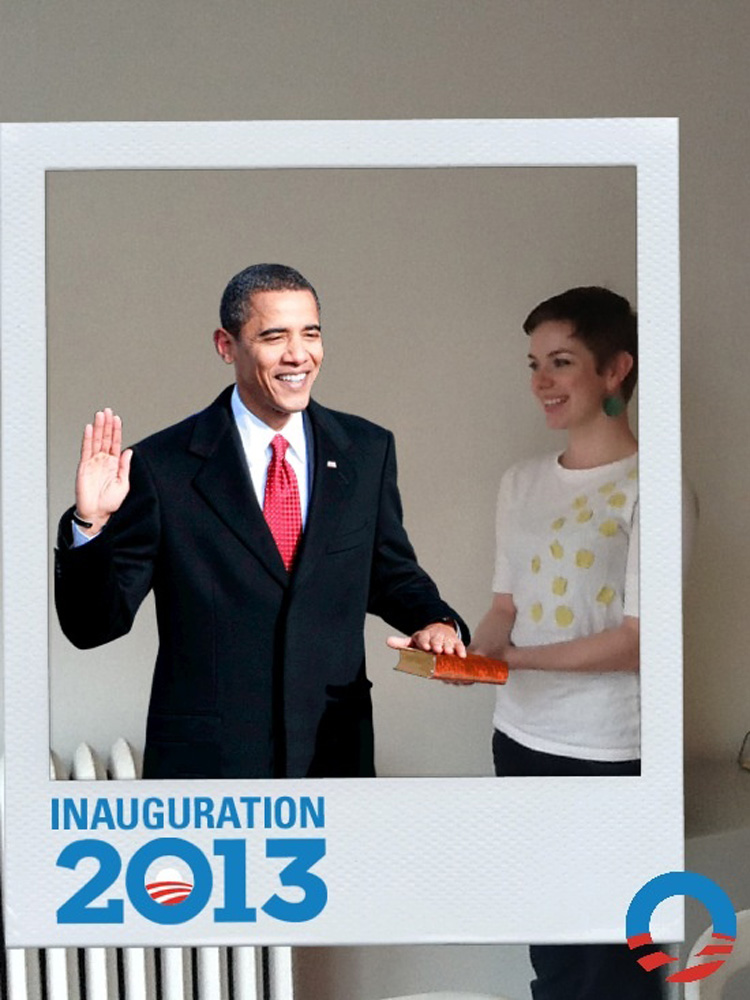
Previously, Rosenthal co-founded Tronic Studio, a digital media agency. She has been named one of Creativity Magazine’s top 50 global creatives of 2010 and was selected as one of the five finalists for L’Oreal’s NEXT Generation Awards highlighting women founded tech companies. Rosenthal has spoken at numerous conferences on the intersection of advertising and technology, including the CaT conference by AdAge,TEDxSilicon Alley 2011 and 2012, Bloomberg Money Moves, Ad Tech and Socialize West. Rosenthal has been featured in Fast Company, The New York Times, Mashable and AdWeek, among many others. She has been selected as a jury member for the Andy Awards, D&AD, One Show Interactive Awards, and the Art Directors Club.
Barry Threw’s work has been presented internationally at festivals including ORF Musikprotokol, Graz, Austria; Club Transmediale, Berlin, DE; Mutek, Montreal, CA; Cynetart, Dresden, DE; Siggraph, San Diego, US. His installation work has been shown at veunes including the Beijing 2008 Olympics, the YouTube BrandLab, the Sacremento International Airport, and CalIT2 at the University of California San Digeo, the Yerba Buena Center for the Arts, and the Gray Area Foundation for the Arts. He has worked in collaboration with myriad artists including Kronos Quartet, Oval, Edwin van der Heide, Egbert Mittlestadt, Biosphere, Camille Utterback, Signal, Monolake and Jon Rose.
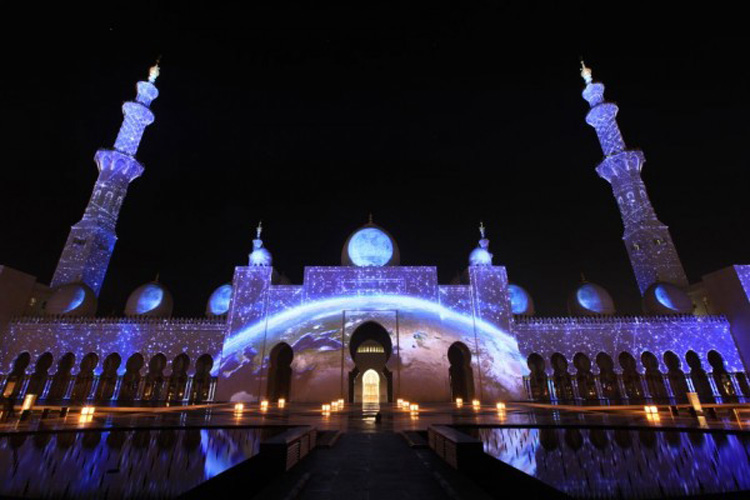
Barry is the Director of Software at Obscura Digital, a San Francisco creative technology studio specializing in the design and execution of immersive and interactive experiences worldwide. He has worked as Software Director for Keith McMillen Instruments, developing advanced technology to bridge traditional string instruments with the computer; Software Architect with Recombinant Media Labs, presenting multi-channel surround cinema at installations and festivals around the world; on the Board of Directors for the BEAM Foundation, seeking to spark a Western new classical music movement based on the technologies and aesthetics of the 21st century; and as a Technical Advisor with the Gray Area Foundation for the Arts, a San Francisco non-profit and digital arts gallery dedicated to building social consciousness through digital culture. He works with Fabricatorz to advance projects that evolving our cultural ecosystems through freedom and sharing.
Barry received an undergraduate degree with a dual major in Music Production and Engineering and Music Synthesis from the Berklee College of Music in Boston, MA. He went on to study electronic music composition, receiving a degree in Electronic Music and Recording Media from Mills College in Oakland, CA.
Margaret Brett-Kearns is Executive Interactive Producer from Goodby, Silverstein and Partners. She spent eight years as an art buyer and joined Goodby Silverstein ten years ago as an executive producer in print. Margaret was the producer on the Adobe Museum of Digital Media project. She has a degree in art history from Mount Holyoke College.
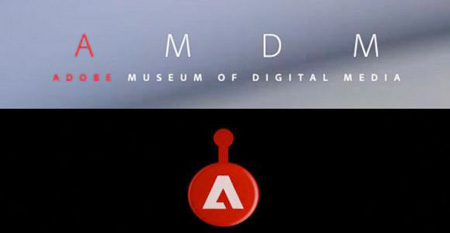
We’re looking forward to seeing you at the LISA conference on Nov. 1 in NYC!
Drawing the Third Dimension: Rendering Interactive 3D Environments with Jitter and Blender
A Harvestworks Workshop taught by Thomas Martinez
Saturday November 2nd – 11am-7pm (30 Intermission + 2 10 minute Breaks)
596 Broadway #602 NY NY 10012 • phone 212.431.1130
In addition to covering the basics of setting up your scene and going through some of the more technical considerations for your virtual scene we will touch on the following concepts:
 Defining environmental attributes for your space such as depth, lighting, and immersive backdrops.
Defining environmental attributes for your space such as depth, lighting, and immersive backdrops.- Mixing between multiple video sources to create a simple video cueing program for performance or dynamic texturing.
- Importing your own models or geometry from your favorite 3d animation software. (Blender, Maya, Autocad…)
- Have your models, shapes, images, and videos react to live or prerecorded sound.
- Fill your virtual world with your own media (Sound/Video/Image/Drawing)
- Animate your media in real-time (Spin It – Move It – Warp It – Destroy It)
- Colorize/texturize/materialize and otherwise manipulate your media visually/sonically.
- Basic modeling techniques in Blender to create 3D models
- ??? What wonders may rise…
Sponsors
We would not be able to undertake this endeavor without the support of our sponsors:
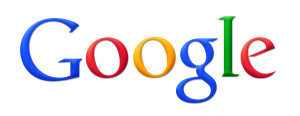
Our Partners:
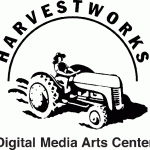
Rates
At Leaders in Software and Art we recognize that, despite the economic potential of software and electronic art, a portion of our community will want to attend but feel unable due to financial constraints.
If you think you belong at LISA, we think you belong at LISA. We’d like to make it possible for you financially to attend.
Please drop us a line at isabel at draves dot org and tell us why you fit with our community, how much you can afford to pay for the conference, and without going into detail, why your employer (did you ask? the conference is very career-enhancing) or personal budget can’t cover our fee.
A discounted ticket shows our support for your career, and we assume you will support us in return. We expect discounted attendees to attend the entire conference, arriving promptly at 8 am and staying until 6:30. If it turns out you will be unable to attend after purchasing your ticket, it is not be refundable or transferable except for cases of extreme need.
Discounted ticketholders are not eligible for workshop discounts and must pay the full workshop price.

